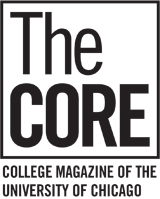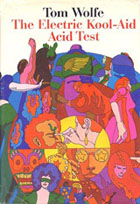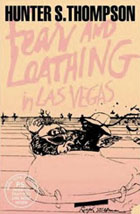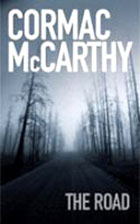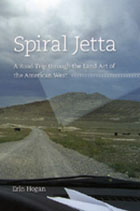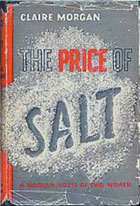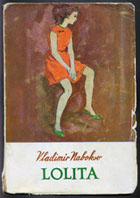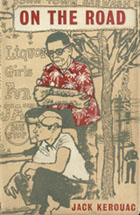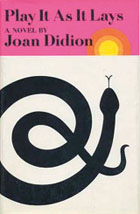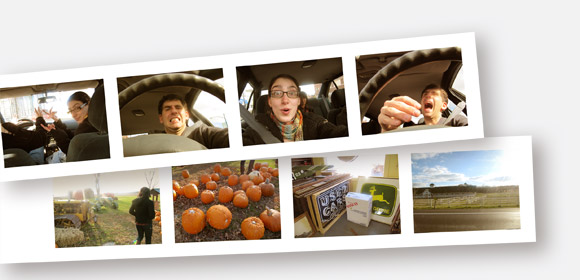
Eye on the Quads
A Lane of One’s Own
Senior Asher Klein takes a road trip for credit.
The plan was simple. From the start of the Magnificent Mile, we would cruise uptown, hang a left on North Avenue, and shoot straight west until we hit the Mississippi. We’d breeze 140 miles or so down Route 64, cutting through Illinois on streets and country roads toward another Michigan Avenue in a town called Savanna, just over the border from Iowa. And in the process, we were sure to learn…something…about what it means to be on the road.
So after class let out one Friday morning, we packed some snacks, grabbed a camera, hopped in my car, and took off. After six weeks of reading about it, talking about it, contextualizing it, historicizing it, theorizing it, my friend Jena Cutie, ’11, and I were finally on a road trip.
Jena and I took ENG 25935, Reading the Road Trip, last quarter. Its draw wasn’t just the reading list—Kerouac, Nabokov, Didion, Wolfe, and more—but the fact that we’d actually be required to hit the road ourselves. “Many of the writers in this course…believed that road travel could offer novel experiences that would reorient their understandings of themselves and the world,” instructor David Alworth wrote in the syllabus. “You should do likewise—go somewhere new, talk to strangers, travel aimlessly. You may use a car, ride the L, or try to convince someone (e.g., a cab driver, a police officer, a mail carrier, a delivery person) to let you tag along.”
In class, we examined the ways postwar Americans wrote about, interpreted, and mythologized an increasingly important experience in American life. Discussion ranged from the Hegelian dialectic of escape—resolving the new life on or after the road with the status quo being left behind—to Mexico making itself into an American tourist destination.
As Jena, another friend, Mounica Yanamandala, ’11, and I barreled down Route 64, I recalled all the ways we’d thought about the car in class: as a mode of transportation, moving site, metaphor, mode of communication, material product of mass industry, and status symbol. (I usually think of my own wonderful car as a piece of junk just minutes from falling apart. We might be a little bit lucky to be alive.)
No matter how you look at it, the road trip means most when the traveler reaches a place far from what he or she is used to. Some of our classmates went to the Indiana Dunes, others to a legendary Halloween party in Madison, Wisconsin. We didn’t really have much of a reason to choose Savanna for our destination, other than that Jena hadn’t seen the Mississippi before. But a jaunt west, from the biggest city in the region to a tiny town on the edge of the country’s biggest river, that was sure to be meaningful—right?
By sixth week, I had read enough to know that no road trip goes according to plan. I don’t think anything did on ours. It took until St. Charles, Illinois—a couple of hours away—for me to forget I was doing homework; it took almost twice as long to get to Savanna as Google said it would.
Having set out for a novel experience, we spent much of the time looking for it, wearing each other out with theories and overblown observations: “Were the Beats self-aware enough to recognize the homogeneity of the road?” We made it to Savanna an hour after sundown, long after we wanted to be there and only to say we did it. We cast a cursory glance at the Mighty Mississippi, stopped for dinner at a grungy bar I tried and failed to like. And then we left.
But our quiet ride back to Chicago, this time on the Interstate, had me thinking about the sameness of some roads, the novelty of others. St. Charles, I thought, is the first town on Route 64 that doesn’t feel like a suburb of Chicago; it looks like your true American home, even if you’re from New York City, like I am. There are shops bunched smiling along the main drag, movie theaters with fancy marquees, the stout Hotel Baker sticking up over the rest like a signpost, and it’s right there on the shining Fox River. With the rest of school to finish and then hopefully a full-time job, I may never go back to St. Charles. Isn’t that a shame?
And in the tiny town of Virgil, known on Wikipedia only as the epicenter of a small earthquake back in February, we came across a little place called Norm’s Corner, a diner-turned-oddities shop. Jason Sauber, a friendly guy from the area, gave us a warty pumpkin, some cups and glasses, and an old sign advertising a $2.00 gasoline can (“Ask for it!” the sign reads, now on my kitchen wall), all for free, just for stopping in. I probably should have known, but I learned the most when I took my eye off the road.
—Asher Klein, ’11
Photos courtesy Asher Klein, ’11
